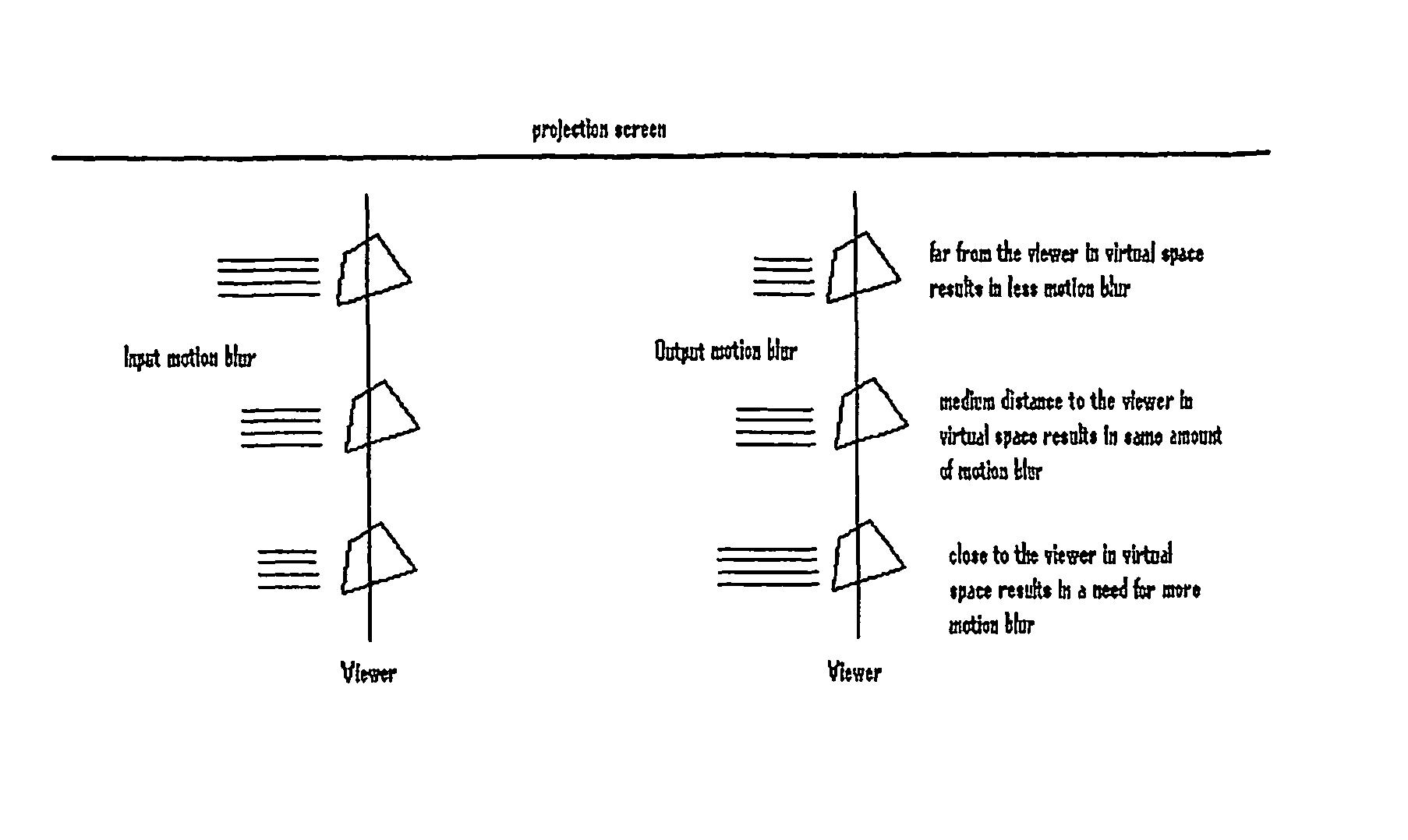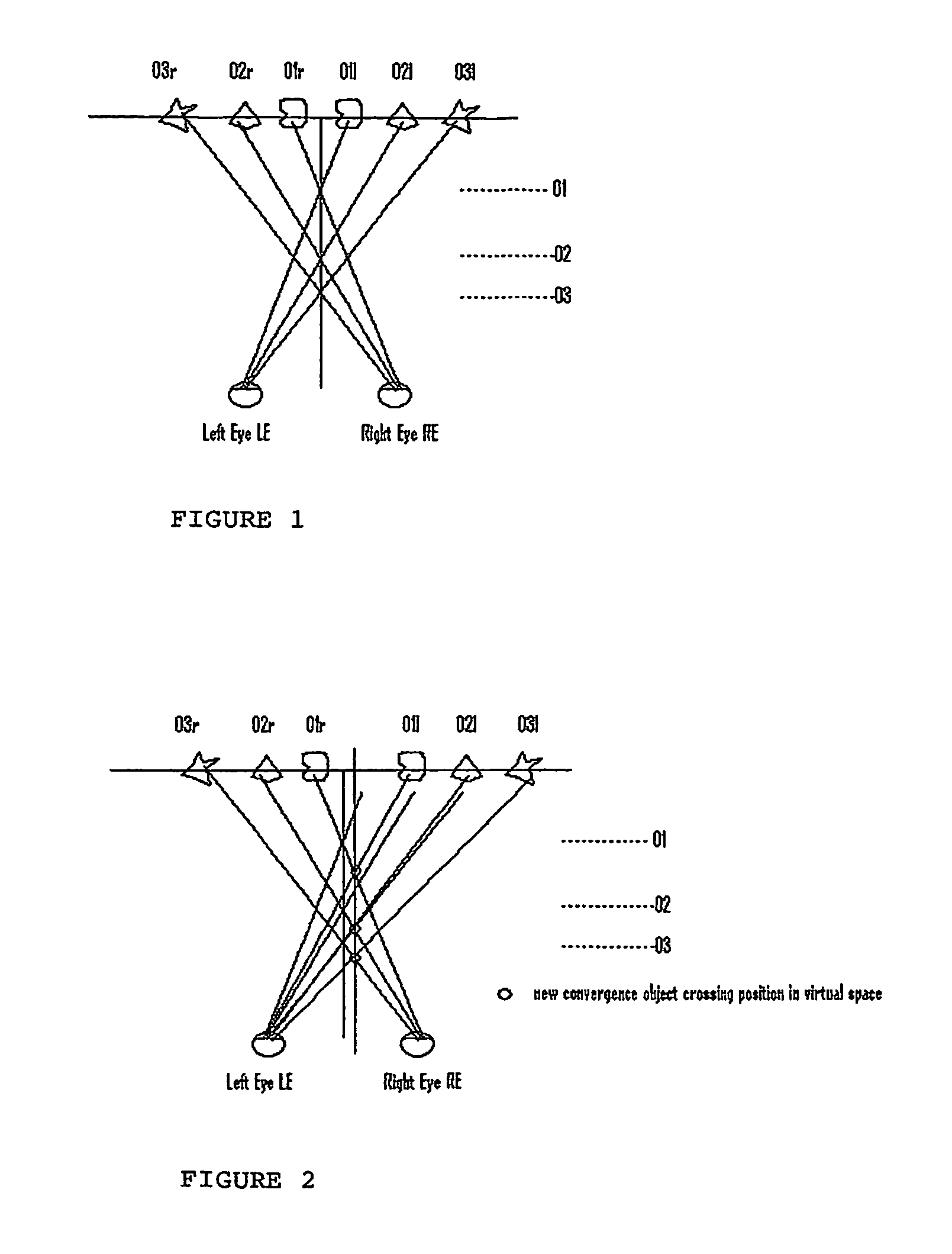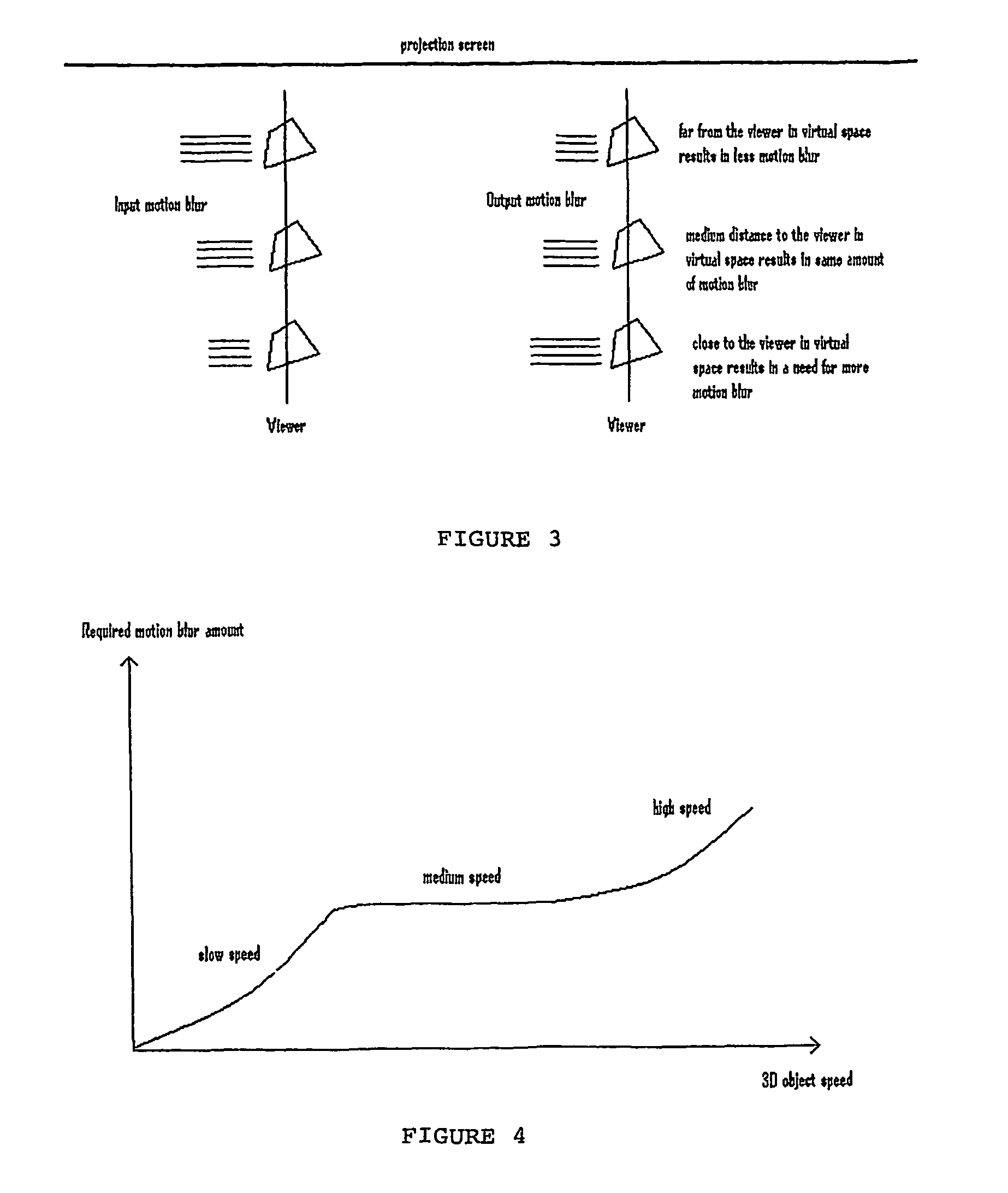Method and apparatus for optimal motion reproduction in stereoscopic digital cinema
a technology of stereoscopic digital cinema and optimal motion reproduction, applied in the field of cinema, can solve problems such as variable perception of moving elements, and achieve the effect of reducing blur
- Summary
- Abstract
- Description
- Claims
- Application Information
AI Technical Summary
Benefits of technology
Problems solved by technology
Method used
Image
Examples
Embodiment Construction
[0022]The progress in Stereoscopic Digital Cinema revealed new problems in the projection of scene objects that are perceived as closer to the theatre audience. If these objects move with speed comparable to the maximum reproducible speed of the frame sequence, they may be displayed on the screen with some motion disruption. Conversely, if the same objects, being closer to the viewer, move with speed below a certain nominal value, their trailing elements, or motion blur, will be visualized more explicitly.
[0023]It is known from two-dimensional image processing that, when increased or reduced appropriately, motion blur can be a valuable tool for enhancing the reproduction of dynamic scene objects. Some natural motion blur occurs during the original camera capture (both digital and analog capture). It appears as object trails while the objects move or change their shape. This physical event is caused by the limited number of frames per second for picture acquisition, e.g. 24 FPS, wher...
PUM
 Login to View More
Login to View More Abstract
Description
Claims
Application Information
 Login to View More
Login to View More - R&D
- Intellectual Property
- Life Sciences
- Materials
- Tech Scout
- Unparalleled Data Quality
- Higher Quality Content
- 60% Fewer Hallucinations
Browse by: Latest US Patents, China's latest patents, Technical Efficacy Thesaurus, Application Domain, Technology Topic, Popular Technical Reports.
© 2025 PatSnap. All rights reserved.Legal|Privacy policy|Modern Slavery Act Transparency Statement|Sitemap|About US| Contact US: help@patsnap.com



